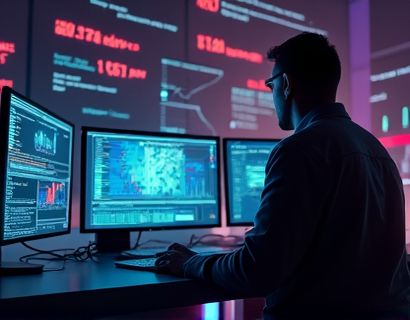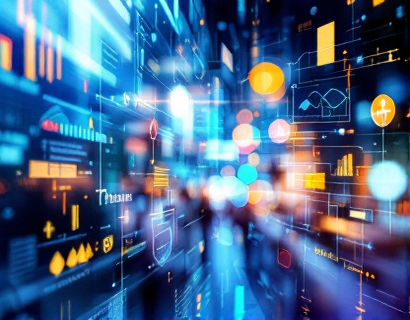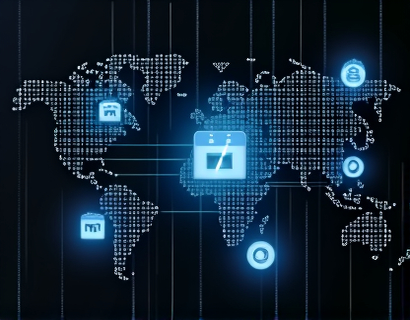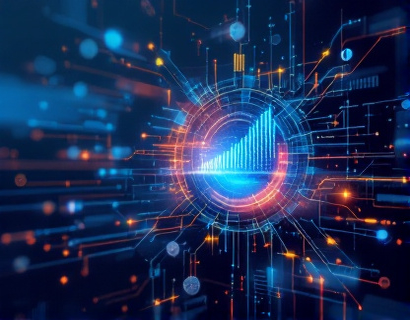Blockchain-Powered Real-World Asset Tokenization: Enhancing Market Accessibility and Liquidity for Digital Equity
Blockchain technology is at the forefront of a transformative shift in asset management, enabling the seamless tokenization of real-world assets. This innovative approach not only secures the integration of physical assets into the digital ecosystem but also significantly enhances liquidity and market accessibility. By leveraging the inherent properties of blockchain, such as transparency, immutability, and decentralization, asset holders and investors can unlock new potentials, streamline transactions, and expand their market reach. This article delves into the intricacies of blockchain-powered real-world asset tokenization, exploring its benefits, challenges, and the future landscape it promises.
Understanding Real-World Asset Tokenization
Real-world asset tokenization refers to the process of representing physical assets, such as real estate, art, machinery, and even intangible assets like patents, as digital tokens on a blockchain. These tokens are essentially digital certificates of ownership that represent a fraction or the entirety of the asset. The tokenization process involves several key steps: identification and selection of the asset, creation of a digital representation, verification and authentication, and finally, the issuance of tokens on a blockchain network.
The primary advantage of tokenization is the conversion of illiquid assets into liquid assets. Traditional real-world assets are often difficult to buy, sell, or trade due to their physical nature and the cumbersome processes involved. Tokenization removes these barriers by allowing assets to be divided into smaller, tradable units, making them accessible to a broader range of investors. This democratization of access to high-value assets is a game-changer for both individual investors and institutional players.
Enhancing Market Accessibility
One of the most significant impacts of blockchain-powered asset tokenization is the enhancement of market accessibility. By breaking down the traditional barriers to entry, tokenization opens up new opportunities for a diverse array of investors. Smaller investors who previously lacked the capital to enter certain markets can now participate in investments that were once exclusive to high-net-worth individuals and large institutions. This inclusivity fosters a more dynamic and vibrant market, driving innovation and growth.
Moreover, the global nature of blockchain networks means that asset tokenization is not limited by geographical boundaries. Investors from around the world can access and trade tokenized assets, leading to increased liquidity and more efficient price discovery. This global reach also helps in diversifying investment portfolios, reducing risk and potentially increasing returns.
Improving Liquidity
Liquidity is a critical factor in asset markets, and blockchain-powered tokenization significantly improves it. Traditional real-world assets are often illiquid, meaning they cannot be easily bought or sold without affecting their price. Tokenization addresses this issue by enabling fractional ownership and 24/7 trading on blockchain platforms. This continuous trading capability ensures that assets can be bought and sold at any time, providing investors with the flexibility they need.
Additionally, the use of smart contracts in blockchain networks automates and streamlines the trading process. Smart contracts are self-executing contracts with the terms of the agreement directly written into code. They automatically enforce and execute transactions when predefined conditions are met, reducing the need for intermediaries and lowering transaction costs. This efficiency not only speeds up the trading process but also makes it more cost-effective for all parties involved.
Ensuring Security and Transparency
Security and transparency are paramount in any financial transaction, and blockchain technology excels in these areas. The decentralized and distributed nature of blockchain ensures that transaction records are stored across multiple nodes, making it extremely difficult for any single entity to manipulate the data. This decentralization enhances the security of asset transactions, reducing the risk of fraud and cyber attacks.
Transparency is another key benefit. All transactions on a blockchain are recorded on a public ledger, which is visible to all participants. This transparency builds trust among investors and asset holders, as everyone can verify the authenticity and history of the assets. The immutable nature of blockchain records also ensures that once a transaction is recorded, it cannot be altered or deleted, providing a tamper-proof audit trail.
Challenges and Considerations
Despite the numerous advantages, blockchain-powered real-world asset tokenization is not without its challenges. One of the primary concerns is regulatory uncertainty. The rapid evolution of blockchain technology often outpaces existing legal frameworks, leading to a lack of clear regulations in many jurisdictions. This uncertainty can create legal risks for both issuers and investors, necessitating a collaborative effort between regulators and the industry to develop comprehensive and adaptive regulatory frameworks.
Another challenge is the technical complexity involved in tokenization. Creating a robust and secure tokenization system requires advanced technical expertise and significant resources. For asset holders and issuers, especially smaller entities, the initial investment in technology and expertise can be a barrier. However, as the ecosystem matures, more user-friendly platforms and services are emerging to lower these barriers.
Case Studies and Real-World Applications
Several notable projects and platforms are already leveraging blockchain for real-world asset tokenization, demonstrating its practical applications and potential. One prominent example is the tokenization of real estate. Platforms like RealT and Propy are enabling fractional ownership of commercial and residential properties, making real estate investments more accessible to a wider audience. These platforms use blockchain to create digital tokens that represent ownership interests in properties, facilitating easier buying, selling, and trading.
In the art world, platforms like SuperRare and KnownOrigin are tokenizing unique digital and physical art pieces. These platforms use blockchain to verify the authenticity and provenance of artworks, ensuring that collectors can trust the assets they purchase. This not only enhances the value of the art but also opens up new markets for artists and collectors.
Another interesting application is in the realm of supply chain management. Companies like Provenance and IBM's Food Trust are using blockchain to tokenize and track the movement of goods, ensuring transparency and traceability. This not only enhances trust among stakeholders but also improves efficiency and reduces fraud.
Future Prospects and Innovations
The future of blockchain-powered real-world asset tokenization is promising, with ongoing innovations set to address current challenges and unlock new possibilities. One area of focus is the development of interoperable blockchain platforms, allowing different blockchain networks to communicate and transfer assets seamlessly. This interoperability will further enhance the liquidity and accessibility of tokenized assets, creating a more integrated and efficient global market.
Another exciting development is the integration of blockchain with other emerging technologies, such as the Internet of Things (IoT) and artificial intelligence (AI). IoT devices can provide real-time data for asset monitoring and management, while AI can enhance the analysis and valuation of assets. This synergy will lead to more intelligent and automated asset management systems, further streamlining the tokenization process.
Additionally, the rise of decentralized finance (DeFi) platforms is opening new avenues for tokenized assets. DeFi allows for the creation of decentralized exchanges, lending protocols, and other financial services that operate on blockchain networks. Tokenized assets can be seamlessly integrated into these DeFi ecosystems, providing investors with a wide range of financial instruments and strategies.
Conclusion
Blockchain-powered real-world asset tokenization is revolutionizing the way assets are managed, traded, and invested. By enhancing market accessibility and liquidity, this technology is breaking down barriers and creating new opportunities for a broader range of participants. While challenges remain, the ongoing advancements and innovations in the blockchain space are paving the way for a more inclusive, efficient, and secure financial ecosystem. As more entities adopt and integrate blockchain solutions, the potential for transformative change in asset management continues to grow.










































